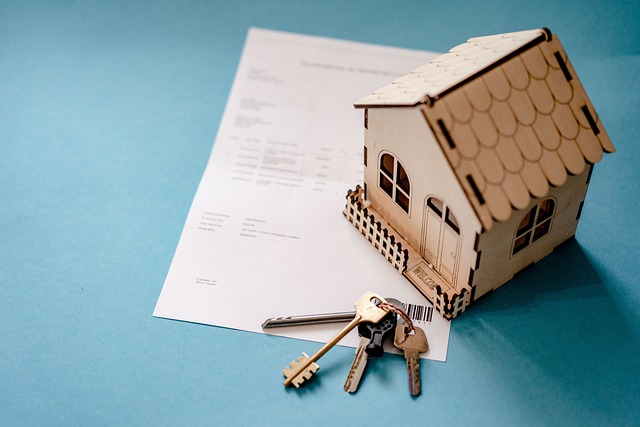Understanding Home Value: Key Drivers & Appraisal Methods
Discover how a property's worth is calculated and why it matters for homeowners, buyers, and investors. This comprehensive guide explains the main factors that affect home value, how professional appraisals work, practical DIY valuation steps, the role of agents, CMAs, AVMs, and cost considerations to help you make informed real estate decisions.

Determining what a home is worth involves many variables — from the physical condition of the property to neighborhood traits and the larger economic environment. Knowing these elements and the common valuation techniques helps homeowners, prospective buyers, and investors make smarter financial choices.
Primary factors that shape home value
Several key elements influence a property’s market worth. Their relative importance varies by location and market conditions, but the main factors include:
- Age and condition: Older houses often need updates and maintenance, which can reduce market value unless they have historic or architectural appeal.
- Recent upgrades and renovations: High-quality improvements — such as modern kitchens, updated bathrooms, new roofing, or upgraded HVAC systems — usually add value, particularly when they align with buyer expectations for the neighborhood.
- Local market dynamics: Supply and demand, mortgage interest rates, employment trends, and the overall economic climate strongly affect prices in any area.
- Access to amenities and schools: Proximity to transit, shopping, parks, green space, and well-rated schools tends to increase desirability and price.
- Zoning and planned development: Anticipated changes in zoning or nearby construction projects can either raise or lower values depending on their nature and scale.
Each of these elements can carry different weight depending on local circumstances. For instance, a new transit line can greatly boost values in a walkable neighborhood, while having little impact in a rural area.
What happens during a professional appraisal
A professional appraisal provides an expert estimate of fair market value, often required by lenders for purchases or refinances. Licensed appraisers combine an on-site inspection with market research using standardized approaches. The sales comparison approach is the most frequent method.
Common steps in the appraisal process:
- Exterior and interior walk-through to evaluate overall condition, layout, and notable features.
- Measurement and verification of lot size and living area to confirm dimensions.
- Documentation of upgrades, deferred maintenance, structural issues, or special amenities that could influence value.
- Selection and analysis of recently sold comparable properties (comps) in the neighborhood.
- Review of broader market trends and neighborhood statistics to contextualize the chosen comps.
At the end of this process the appraiser compiles a written report with an estimated value and the rationale behind it. Lenders typically rely on these reports for underwriting decisions.
Why tracking your home’s value matters
Understanding your property’s market value supports a range of financial decisions:
- Setting a competitive listing price: A realistic price helps sell faster and avoids leaving money on the table.
- Refinancing and home-equity borrowing: Accurate value determines available equity and loan-to-value ratios.
- Insurance adequacy: Ensuring replacement-cost coverage matches property value reduces the risk of being underinsured.
- Property tax appeals: If assessed values look too high, documented market evidence can support an appeal.
- Renovation planning: Knowing expected returns helps prioritize projects that deliver the best payoff.
Regularly checking your home’s estimated worth is a sensible habit whether you plan to sell or simply want to monitor a major financial asset.
Estimating value yourself (DIY methods)
While an official appraisal is the most reliable option, homeowners can develop reasonable estimates using freely available tools and manual comparisons. Automated valuation models (AVMs) on real estate sites provide quick ballpark figures based on public records and recent sales, but they may miss recent upgrades, unique property characteristics, or subtle neighborhood shifts.
A practical DIY approach:
- Research recent sales of truly comparable homes nearby.
- Adjust for differences in square footage, condition, bedroom/bath counts, and special features.
- Factor in recent neighborhood changes such as construction, school rating shifts, or new amenities.
- Watch market direction: are prices trending up, flat, or down?
Use this process to generate a starting estimate, but treat it as provisional rather than definitive.
How real estate agents and CMAs help
Real estate agents prepare Comparative Market Analyses (CMAs) that mirror appraisal techniques but are tailored for listing strategy and pricing. A CMA typically includes:
- Recently sold comparable properties
- Active and expired listings for market context
- Adjustments for unique characteristics or needed repairs
- Local insight drawn from the agent’s experience and MLS access
Agents commonly offer CMAs as part of a listing consultation. Their access to comprehensive MLS data and neighborhood knowledge makes a CMA a useful complement to other valuation methods.
| Service | Provider | Cost Estimation |
|---|---|---|
| Professional Appraisal | Licensed Appraiser | $300 - $700 |
| Comparative Market Analysis | Real Estate Agent | Often free (may be part of listing services) |
| Automated Valuation Model | Online Real Estate Platforms | Free - $25 |
| Home Inspection | Certified Home Inspector | $300 - $500 |
Prices, rates, or cost estimates mentioned in this article are based on the latest available information but may change over time. Independent research is advised before making financial decisions.
How often to re-evaluate your home’s worth
Property values change with market cycles, neighborhood evolution, and improvements to the home. A sensible cadence is to review your home’s estimated value at least annually and whenever you plan to sell, refinance, or borrow against equity. More frequent checks are prudent during volatile markets.
Final perspective
Being familiar with the forces that determine home value and the range of valuation options — professional appraisals, CMAs, AVMs, and thoughtful DIY comparisons — puts you in control when making real estate decisions. Combining hard market data with on-the-ground knowledge of your property and neighborhood produces the most reliable valuation. Whether buying, selling, refinancing, or simply tracking an investment, a clear sense of value helps you act with confidence.






